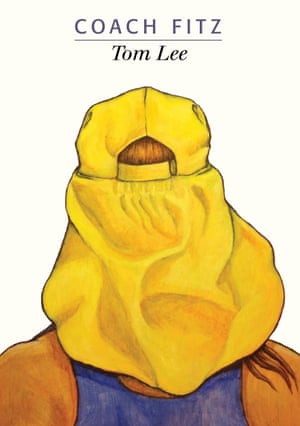Over the past 10 or so years the Australian fitness industry has begun to realise what the restaurant industry did a couple of decades earlier: the climate and natural amenity of our cities should set the tone for our pleasures and pursuits. Fitness enthusiasts have migrated from indoor gyms to parks, ovals and beachfronts, so that the ventilation and vantages afforded by these locations can be enjoyed to a maximum degree.
In wealthy democracies like Australia this increase in visibility has been combined with a massive explosion in the diversity of fitness activities. It is not uncommon to see a group of lycra-clad devotees flipping a large tractor tyre across a grassy expanse with a focus and dedication that suggest their lives depend on the task. Thickly braided lengths of rope are incorporated into regimented dance routines and people swing lumps of metal backwards and forwards like clappers orphaned from their bells.
One of the unintended consequences of the growth in outdoor fitness culture is that now other people – those who might define themselves as the dog-walking, ice cream-eating, drone-flying or pram-pushing public – have no choice but to be exposed to the spectacle of bodily redesign and the accompanying bootcamp antics that were previously undertaken in less conspicuous locations.
The North Bondi outdoor fitness gym is a hotspot for these assertive and restorative varieties of leisure. A place where the allure of gentle, beachside relaxation meets with the spectacle of buff, tanned, often exclusively male bodies, testing themselves on the fitness equipment.

When I first moved from the central west of New South Wales more than 15 years ago, I remember being awestruck by the bizarre displays of physical exuberance at this site, which I still find somewhat strange. It is a vision of some intensity; an expression of power that looks like a performance of physical aggression. It’s also hard to ignore the single, generic template of a sculpted V-shape to which most of these bodies conform. I understand how the assertive display of such a body might dominate a space, and impinge on the security of others whose physical forms aren’t celebrated in the mediascapes of our times.
But there is also something enduringly camp and fascinating about these fitness routines, a kind of lurid glamour that to some extent distinguishes this city, famed, among other things, for its stunning harbour and Mardi Gras parade. It’s certainly more disco than rock and roll, more Flashdance than Fight Club.
Absorbing the spectacle, I ponder how the mundane activities of Russian farmers (from whom the origins of the increasingly common kettlebell exercise routines can be traced), ancient gymnastic routines, military drills and the less intensive forms of aerobic exercise have all made their way to this beachside stage, where the explicit stimulation of muscle and the body’s chemical reward systems are a focus.
I was at once surprised by and sympathetic to the cynical responses to an Instagram video I recently posted of people working out at this outdoor gym. One response, in particular, articulated a view that is commonly held about groups of people redesigning their bodies through training: “These poor buggers who think they’re onto something. They look like sheep.”

What is it that stirs this level of agitation when we witness public displays of athletic pride? Is it simply that we feel guilty for not exercising ourselves? Is it the notion of a bodily standard that we sense is broadly damaging? Is it a mistrust of technique comparable to the mistrust we feel towards technology? As though physical augmentation through training was a departure from the authentic, physical self that we have been given, by God, by chance or by our genes?
The tension between cynicism and my still resonant reverence for outdoor exertion was at the forefront of my mind when working on my recent novel, Coach Fitz. I wanted to write about the self-discipline, power, physical exuberance and sensuality of such exertion, free from the elements of critique and the depressive emotions so common to works of literature written in the shadow of cultural studies. However, the spectre of the comic, and the negativity with which the subject is associated, was hard to shake off.
Like everything nowadays, self-improvement is an industry, the extremes of which easily inspire cynicism. But to run through a park or along the beach in the early morning or at dusk and join with the bodies in motion there – twisting, tensing, gyrating and stretching their flesh – is for me a reminder of something marvellous in our species: the desire to transform our bodies, to experience landscape through movement, and to enhance our feelings by subjecting ourselves to particular kinds of ritual.
One aspect of these displays of aspirational glamour that is not often considered is the change in inner experience sought by its practitioners through movement and balance, and the way this change in turn becomes a way to fully experience the potential of the outdoors. The role of more subdued forms of bodily motion, particularly walking, is increasingly claimed, by authors from Will Self to Rebecca Solnit, as a vehicle for political protest, the generation of ideas, and self-discovery. But what of the inspirational powers of burpees? The resistance to capitalism in a lunge matrix? The surreal inner journey of a plank? What great potential for existential revelation and political resistance they might contain!
• Tom Lee’s novel Coach Fitz is published by Giramondo
Source: Read Full Article
